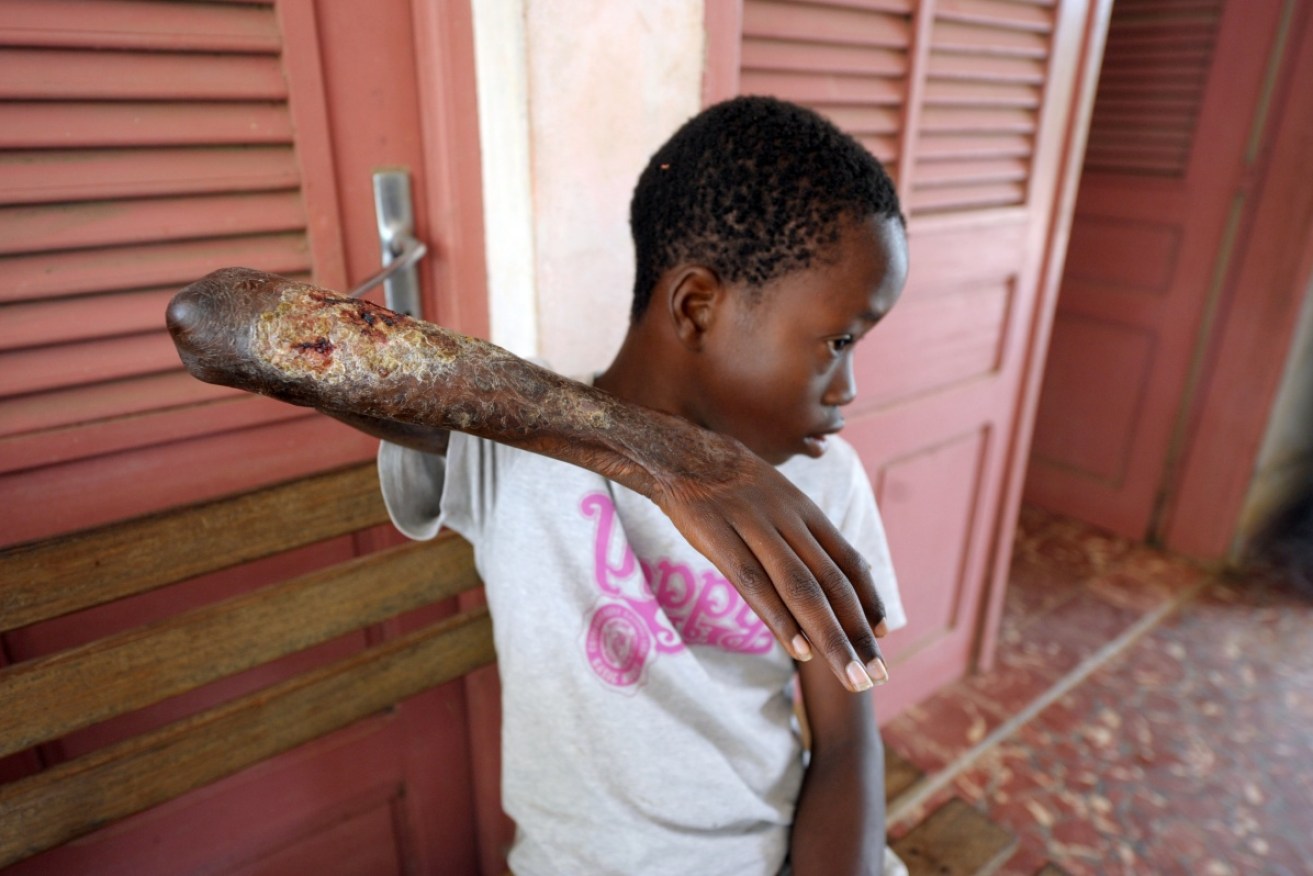‘Worsening epidemic’: Researchers call for urgent response to flesh-eating ulcer


Cases of a flesh-eating disease, commonly found in West Africa, are rapidly rising in Victoria. Photo: Getty
Researchers are calling for an urgent response to the “worsening epidemic” of a flesh-eating ulcer spreading across Victoria.
Cases of Buruli ulcers are rapidly on the rise in Victoria with 30 cases already reported in the south-east of the state in 2018, according to a new article in the Medical Journal of Australia published on Monday.
Cases in regional parts of the state increased from 182 cases in 2016 to 236 in 2017, the report found.
Researchers called on governments to inject funding to find out why the “rapidly worsening” disease is growing.
“Here, the community is facing a worsening epidemic, defined by cases rapidly increasing in number, becoming more severe in nature, and occurring in new geographic areas,” Barwon Health department of infectious diseases deputy director and lead author Daniel O’Brien wrote.

Cases and incidence of Buruli ulcers in Victoria from 2004–2016. Photo: Medical Journal of Australia
“As a community, we are facing a rapidly worsening epidemic of a severe disease without knowing how to prevent it.
“The time to act is now, and we advocate for local, regional and national governments to urgently commit to funding the research needed to stop Buruli ulcer.”

A case of Buruli ulcer on the knee of an 11-year-old Australian boy. Photo: Medical Journal of Australia
Buruli ulcer, also known as Bairnsdale ulcer or Daintree ulcer, causes severe destructive lesions of skin and soft tissue, and affects all age groups.
It can cause death, long-term disability and severe skin deformities, the report found.
The Medical Journal of Australia report said it costs an estimated $14,000 per patient to treat, with an estimated cost to Victoria in 2016 of $2,548,000.
Despite the cost, treatment is said to be 100 per cent effective, using combination antibiotic regimens such as rifampicin and clarithromycin that are not covered by the Pharmaceutical Benefits Scheme.
Cases are also frequently reported from the Daintree region in Queensland, with 95 cases between 2009 and 2015, and less commonly in the Northern Territory, New South Wales and Western Australia.
About 2000 Buruli ulcer cases per year are reported worldwide, most commonly from the tropical regions of West or Central Africa.








